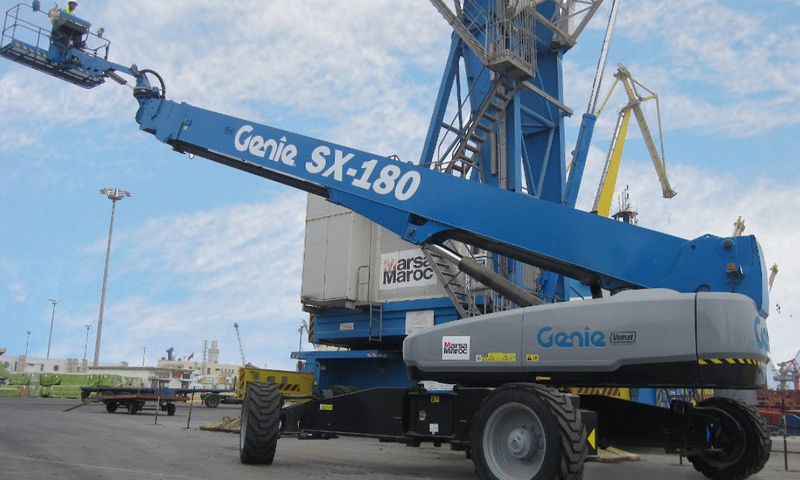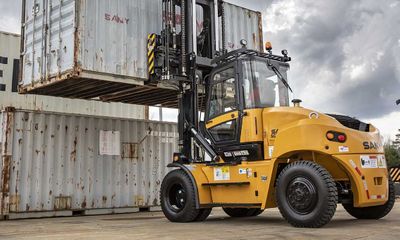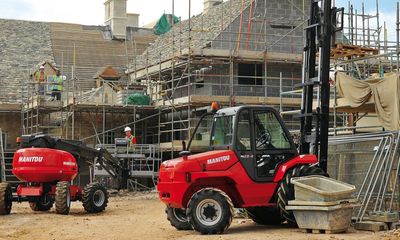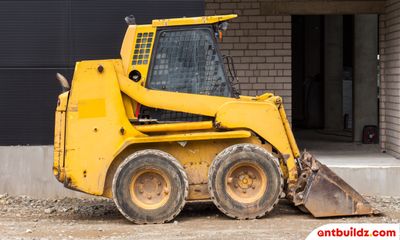© 2025 Powered by Antbuildz.com
© 2025 Powered by Antbuildz.com

Boom lift, part of the Mobile Elevated Work Platform (MEWP) category, is extremely helpful in gaining access to hard-to-reach places for jobs such as maintenance, construction, and emergency response. In Singapore, proper training and authorization are required to operate a boom lift. Safety precautions need to be taken into consideration prior to boom lift operation to be run smoothly. If your company renting a boom lift for your coming projects, here are 10 safety tips for working on or around them safely.
There are two type of boom lift available which are Telescopic and Articulating Boom Lift,
Learn the Important Tips How to Choose the Right Boom Lift.
These are important to consider and implement when operating a boom lift and can help prevent injuries, accidents, damage, and liability concerns.


Always make sure that the base and the entire circumference of the boom lift are clear of any person while the boom lift is in use with proper barricades. The circumference of the lift is often significant and tools can easily fall from the platform and seriously hurt anyone who may be standing below. Keeping the entire area clear minimizes the risk of anyone being hit below by objects that may fall.
Though very rare, it is also possible for boom lift to tip over. Keeping the area under and around the boom lift clear will help ensure that no one is hurt if the entire structure tips over.
Hiring employees who are properly trained to operate boom lifts and who maintain relevant safety certifications and knowledge can help keep yourself and your other employees safe while the boom lift is in use. Testing potential new hires with hands-on assignments that demonstrate their operational knowledge of the lift can help detect potential problems and address them before any accidents happen on the actual job.
There are much available training centers offering Boom lift Operator Course in Singapore. You can easily attend the course or send your employee over for one day of training to obtain the certificate.

A simple but vital safety measure is wearing a harness and ensuring the lanyard is fully secured to the bucket. While it may seem unlikely that an operator will fall out of the platform, even the slightest bump from another piece of equipment or object can throw an operator off-balance and put them at risk of falling. The guard rail is designed to keep you inside the platform, but in the event of strong winds or lift malfunction, wearing a harness can save your life.
Each boom lift has a specific weight capacity. It is important to identify and adhere to these restrictions. Going over this limit, even slightly, could potentially make the lift top-heavy and cause it to tip over. One should always account for the weight of the operator on the lift as well as all tools and materials on the platform to ensure that the combined weight isn’t more than the recommended capacity before operating the lift. It’s also important to remember not to use the boom lift for lifting heavy supplies.
A typical boom lift will have a platform capacity of 230kg that can accommodate 2 workers.
When on the platform of a boom lift, it’s easy to be inclined to climb on the edge of the platform to reach something instead of moving the entire boom lift to reach it. However, this is more dangerous than many realize. Climbing or sitting on the edge of the platform significantly increases one’s chances of falling off the platform and can result in serious injury. If there is something that isn’t accessible, communicate with the boom lift operator to help get to a safe position in the platform where you can easily reach what is needed.
If you are working below the lift, always be aware of objects (this includes tools, equipment, and debris) that may fall to the ground. Listen for any warnings from the lift’s operator and react quickly to avoid being hit if you are in the object’s trajectory. You also can install a safety net around the bucket to prevent any potential falling object from the bucket.
Even if you are wearing a harness, you can still fall out of the basket if you are leaning or hanging over the guard rails. If you cannot reach something, adjust the lift’s position and height accordingly. (This also means that you should not use ladders or anything else for extra height.)
When a boom lift is extended very high, the wind can pose a substantial safety concern. If the wind is strong enough, it can knock a boom lift over completely. One should avoid using a boom lift in extremely windy conditions or in other adverse weather to avoid the risk of a boom lift potentially falling over. Each lift has a limit of how much wind it can withstand; reviewing the user manual will help an operator understand the specific restrictions of the lift they are operating and identify strategies for using the lift in challenging weather.
The height at which the boom lift can extend makes this equipment particularly vulnerable to tipping over. Ensuring the boom lift is being operated on even ground and on a stable base will help keep the operator and surrounding workers safe. Using the boom lift brakes correctly is one method that can be implemented to help stabilize the boom lift base.
Properly reviewing the manufacturer’s manual will help an operator understand how to effectively maneuver the boom lift and when it is and isn’t safe to move the lift while it is extended. Although, as a best practice, it’s often best to avoid moving the lift in this manner. Moving a lift while extended creates an opportunity for injury and should only be done when it is necessary and only if the manufacturer’s manual specifically condones it. Otherwise, one should lower the boom lift completely, move it and then extend where needed.
These 10 safety tips above mentioned are significant to be considered and implemented when operating boom lifts and can help prevent injuries, accidents, damage, and liability concerns.
We are the first digital equipment rental platform in Singapore set to reinvent the traditional construction equipment rental into a truly touchless equipment rental experience. Visit antbuildz.com to search your preferred equipment such as Push Around or even a scissor lift, check the price, and rent it instantly over the platform here.
Remember to like and share our Facebook page! bit.ly/34MdSFh
Any Questions?
WhatsApp or Call Us for a FREE consultation on the most suitable equipment for your site. We’re more than happy to assist!
Related Articles

Why is Insurance So Crucial for Equipment Rentals?
Construction equipment is so crucial and essential to help humans execute constr ...
Learn more
22 Jan , 2025

11 Safety Tips on Operating a Forklift
11 Forklift Safety Tips The forklift is also called a lift truck, is one of the ...
Learn more
22 Jan , 2025

The Advantages of Rough Terrain Forklift
A forklift can also be called a lift truck, jitney, fork truck, fork hoist, and ...
Learn more
22 Jan , 2025

Understanding Skid Loader Rental Prices in Singapore and Malaysia
Skid loaders, also known as skid steer loaders, are versatile and essential mach ...
Learn more
22 Jan , 2025